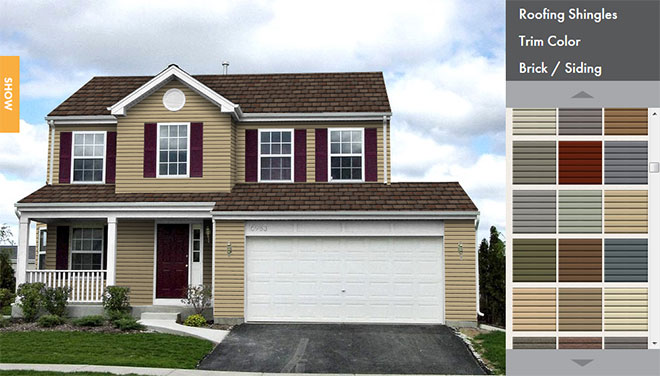Preventive Roof Maintenance
To maintain profitability in an economy of sluggish markets and corporate downsizing, many companies are cutting costs in various areas. All too often, one of the first areas to be reduced is maintenance.
Maintenance is a tempting target for budget slashing because, in a sense, maintenance means paying for things that aren’t broken—so the true costs of skimping on maintenance are hidden. But when they come due, it can mean big trouble. This is especially true of one particularly high-impact area of preventive maintenance in which many companies fall short: roof asset upkeep.
By de-emphasizing, postponing or curtailing preventive roof system maintenance, organizations are realizing short-term savings but creating situations that can have long-term and seriously negative consequences. The fact is properly functioning roof systems are vital to an organization’s success, and they’re under assault 24 hours per day. Extreme heat and cold, ultraviolet rays, heavy rains and winds, contaminants and rooftop traffic are some common elements roof systems must withstand regularly.
Once a roof system begins to deteriorate, as it inevitably will without maintenance, resulting roof leaks and other problems can affect an organization’s bottom line in many ways, such as:
- Lost revenue from product damage or tenants moving out
- Lost space from areas ruined by leaks
- Equipment downtime
- Air-quality issues (Moisture-filled or leaky roofs can breed microorganisms.)
- Increased repair expenses
- Overall building deterioration
- Reduced energy efficiency and higher energy costs (A light-colored, reflective “cool” roof loses its reflective advantages as it becomes covered with dirt, soot, etc.)
- Potential for structural failure and serious damage
Despite the risks, preventive roof system maintenance traditionally has not been a high priority for businesses, especially during tough economic times.
An organization’s mindset also may contribute to deferring and underemphasizing the importance of preventive roof system maintenance. Those in charge of maintenance (facility managers, maintenance managers, property managers, etc.) often are regarded by corporate executives as “profit spenders” who continually ask for more money, the benefits of which cannot directly be seen. It’s often easy for management to accept roof system deterioration as “normal,” the solution being simply to replace a roof once the situation becomes more dire.
The need for preventive maintenance is readily accepted in the case of equipment, vehicles, appliances, HVAC systems and so on. Yet all too often, preventive roof system maintenance receives a low (sometimes almost nonexistent) priority until leaks cause visible damage to insulation, ceiling tile, walls, fixtures, electrical systems and other readily accessible building elements. The extent of the damage can range from a nuisance (stained ceiling tile, for example) to a disaster.
The Worst Case Scenario
The worst scenario that can result from lack of preventive roof system maintenance is roof collapse. In June 2007, for example, a portion of a roof collapsed at a European press shop operated by a major automobile manufacturer. The low-slope roof system, which was about 2,700 square feet, collapsed as a result of excessive weight from rainwater that had formed ponds on the roof during a severe thunderstorm. The drains and roof outlets through which the rainwater should have been diverted were clogged with dirt and debris, allowing the water to get increasingly deeper and deflect the roof structure. The roof structure was further destabilized by excessive horizontal forces from 10 crane bridges with drive mechanisms that never had been synchronized to avoid vibration.
The collapse was gradual, and the resulting noise alerted workers to evacuate the building, so no one was hurt. However, the company suffered significant damage to equipment, downtime and repair costs in addition to the need for roof system replacement.
Although the new roof system featured some necessary design improvements, such as installation of overflow scuppers and improved location of drainage outlets, the key takeaway was the need for regularly scheduled inspections and a preventive roof system maintenance program. This includes review of roof drainage during rain (to spot unusual ponding or deflection) and visual checks for corrosion, fatigue, damage or unauthorized modifications.
The building owner now knows the importance of simple but necessary procedures such as cleaning out drains, clearing debris and periodic inspections—a lesson driven home in a rather dramatic way.
Benefits of Maintenance
The importance of preventive roof system maintenance goes beyond reducing the chances of failure or collapse. A preventive roof system maintenance program pays for itself in many ways by protecting interior human and material assets from everything from falling debris to mold spores and retaining R-value.
A good preventive roof system maintenance program can decrease overall life cycle costs by:
- Minimizing downtime for equipment and production areas, preserving revenue and reducing repair costs
- Improving tenant satisfaction, reducing complaints and reducing liability exposure
- Preventing accidents, injuries and possible legal claims
- Improving air quality and reducing mold and mildew problems and/or need for cleanup
- Reducing regular and overtime labor expenses for cleanup and repair work resulting from roof leaks
- Preventing energy loss from wet insulation by reducing leaks and water intrusion
- Improving reflective performance of cool white roofs by cleaning and/or clearing debris
Besides protecting key interior assets, preventive roof system maintenance can save money in another important way: by allowing roofs to be repaired or refurbished instead of replaced. Proper maintenance can help avoid, or at least delay, costly roof system replacement needed because of leaks or damage.
When incorporated into a comprehensive roof management program, preventive maintenance can save considerable money and resources by heading off trouble before it starts.
The Quick-Fix Dilemma
To reduce the possibility of roof failure or problems, some organizations resort to a “quick fix”—hiring a roofing contractor to perform large amounts of repair work in response to obvious problems resulting from lack of annual or biennial preventive roof system maintenance. Such methods can result in a repair that is more expensive than preventive maintenance.
For example, a Minnesota automotive facility’s plant engineering department, having undertaken a costly roof system replacement project, still experienced extensive roof leakage at several of its roof exhaust fan curbs. The roof system replacement had been particularly difficult and expensive because of a combination of extremely restrictive overhead clearances above the roof and the need to remove two existing roof systems.
Curious as to why the new roof system was leaking, facility managers investigated and found that though the roof membrane and flashings at the fan curbs were intact, several nearby roof drains had become clogged with miscellaneous debris, which caused accumulated heavy rainfall to build up to the height of the fan curbs and then pour over the curbs into the building.
Instead of recognizing it’s never too early to begin a preventive roof system maintenance program—even on a new roof system—and the simplest approach is to remove debris on a regular basis, the facility added a second quick fix: It hired a roofing contractor to seal the gap between the roof flashing and the exhaust fan’s metal skirt flashing in case the drains became clogged again. The facility now has sealed penetrations, which will not leak but will retain water and increase potential for structural failure resulting from the water load.
Other Obstacles
Even when the need for preventive roof system maintenance is recognized and accepted, it’s often easier said than done. The low priority for preventive roof system maintenance goes beyond cost issues though that is the biggest factor. In addition to budget concerns and the quick-fix mindset, there are numerous other obstacles that can make carrying out a comprehensive preventive maintenance program more difficult in reality than it seems on paper:
- Resource allocation. Insufficient personnel may be assigned to maintain large roof areas, making a thorough job difficult. Outsourcing maintenance assignments can hamper preventive maintenance efforts; in some cases, reductions in force can limit the availability of personnel to deal with preventive roof system maintenance, which is why hiring a roofing professional is important to ensuring longer roof system life. Maintenance also may be low on the list of things to do and delayed until other tasks are completed.
- Appreciation of roof drainage. The importance of keeping drains, scuppers and outlets clear is not always recognized. They can become clogged with surprising ease, and blocked drainage can prevent roofs from shedding water as designed, resulting in water infiltration, damage and possible compromised structural integrity.
- Rooftop equipment alterations and maintenance. Maintaining or replacing HVAC equipment or other equipment can damage a roof and provide openings for water and further damage. Such damage also may void a warranty agreement.
- Exterior conditions and climate. Rain, snow, ice, heat, exhaust fumes, pollution and many other factors can cause gradual roof system deterioration. Ideally, roof system inspections should be performed after severe storms. In addition, inexperience and poor practices dealing with snow and ice, such as chopping ice, can further damage a roof system.
- Subjective interpretation of roof conditions. A roof system inspector needs to know what to look for and where. Many causes of gradual deterioration, such as rust, can be hidden or subtle and are easy to miss or misinterpret. Worse, some roof system inspections are performed by contractors with a vested interest in recommending costly solutions, which are easy to put off because of budget constraints.
Maintenance Prescription
The best approach to preventive roof system maintenance is to recognize it as an important need for preserving roof assets and to make it a priority on par with other initiatives to protect and preserve vital assets. Conceptually, preventive roof system maintenance is a straightforward process; the key is to see the challenge from the right perspective.
The starting point is periodic roof system inspections at regularly scheduled times by qualified personnel who know what to look for. Regular inspections help prevent small problems from turning into big ones. Extra inspections should be performed following severe weather events such as heavy snowfalls, ice storms, thunderstorms and high-wind events.
The next step is routine maintenance in the form of common-sense procedures and practices. Some routine tasks should include:
- Regularly removing debris such as trash, leftovers from mechanics’ work and contractor jobs (paint cans, wire, rags, glass), tree branches, etc. Debris on a roof can block drains and cause ponding and flooding over roof edges and flashings. Trash barrels never should be situated on a roof.
- Cleaning roof surfaces to remove natural buildup of dirt, dust, leaves and other debris. On some roofs, aggregate surfacing embedded in bitumen on the roof membrane and larger river rock used to ballast loose-laid single-ply roof membranes can be blown around and pile up at roof drains, scuppers and gutters; this material should be relocated to its original locations.
- Proper snow and ice removal, including investigating drainage systems for blockages caused by ice or snow buildup. Ice on roof surfaces, gutters and drains should never be chopped or hammered because metal roof elements can be bent, cracked or dented, leading to blockages and leaks.
- Cleaning roof drains, gutters and downspouts on a regular basis (generally twice per year in spring and fall) to prevent potentially disastrous water backup. This procedure may need to be done more often if significant numbers of leaves collect in open gutters and at drains. All rooftop cleaning should be done without corrosive or oil-based cleaning fluids, which can damage roof membranes and accessories.
- Repairing corroded surfaces
- Avoiding unnecessary roof traffic by facility personnel or outside contractors; such traffic should be restricted to walkways or easily maintained areas. Rolling traffic such as carts, wheelbarrows and hand trucks should only be used by trained operators in designated areas and have appropriately soft tires. Scaffolding and ladders should be placed on pads or planks to protect the roof, and paint and oil cans should be placed on tarpaulins or sheets.
- Properly flashing and mounting new equipment on a roof at a proper distance above the roof so the equipment can be easily serviced and the roof system maintained
The Specialist Option
Organizations and businesses do not have the appropriate personnel needed for a rigorous preventive maintenance effort, much less a comprehensive roof asset management program. An ideal solution is to rely on a roof asset management specialist to protect roof assets by performing comprehensive services. The most sophisticated of these specialists not only can spot potential trouble before it starts but can project potential outcomes of various interventions (from simple repairs to complete overhaul or replacement) and make recommendations as to a future course of action.
Investing In Preventive Roof Maintenance Is Worth The Cost
When selecting a roof asset management specialist, there are several key things to look for:
- Experience and good reputation; the more roof asset data a specialist has access to, the more accurate his or her projections of future events can be.
- No vested interest in recommending a particular service, solution or product
- Objective and proven methods for judging the condition of roof assets
- A system for predicting the outcome for areas of concern (where corrosion has set in or drainage slope is insufficient, for example) and for recommending a course of action. Some roof asset management program specialists employ computer modeling software to provide projections of future developments.
Start At The Top
Employing a roof asset management specialist is becoming increasingly popular among organizations. The most important thing to remember is whatever the investment in preventive maintenance—from regular inspections to hiring a roof asset management specialist—it will pay off through reduced costs and minimized risk of future problems.
Protecting an organization’s bottom line means starting at the top with a focus on keeping its roof properly maintained, sound and weathertight to protect vital assets in the building.
An experienced Commercial Roofing Contractor understands that property management is an ongoing game of budgeting, prioritizing and re-prioritizing your facility’s repairs on your commercial roof.
Implementing a regular, periodic Roof Management Program is critical to validating the warranty, prolonging the life, and avoiding failure of a commercial roof.


 Click Here
Click Here Click Here To Use
Click Here To Use